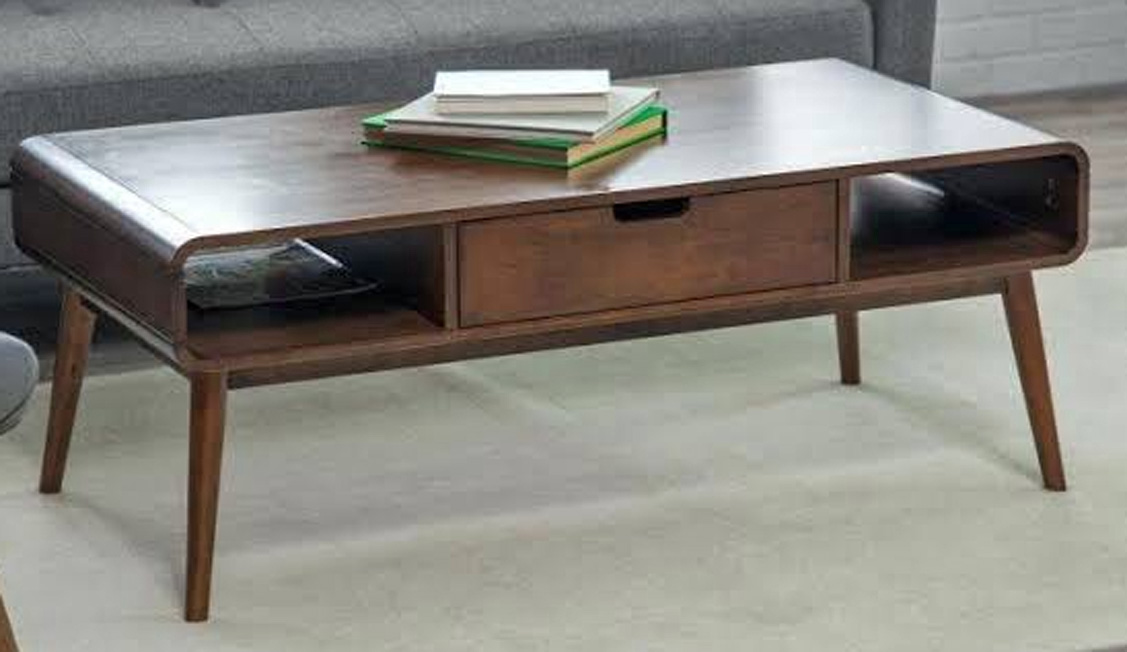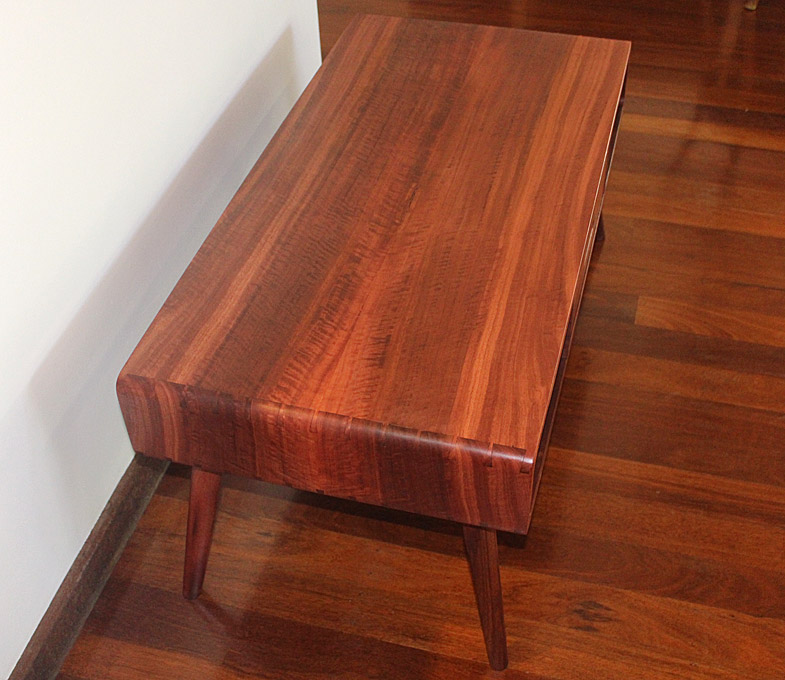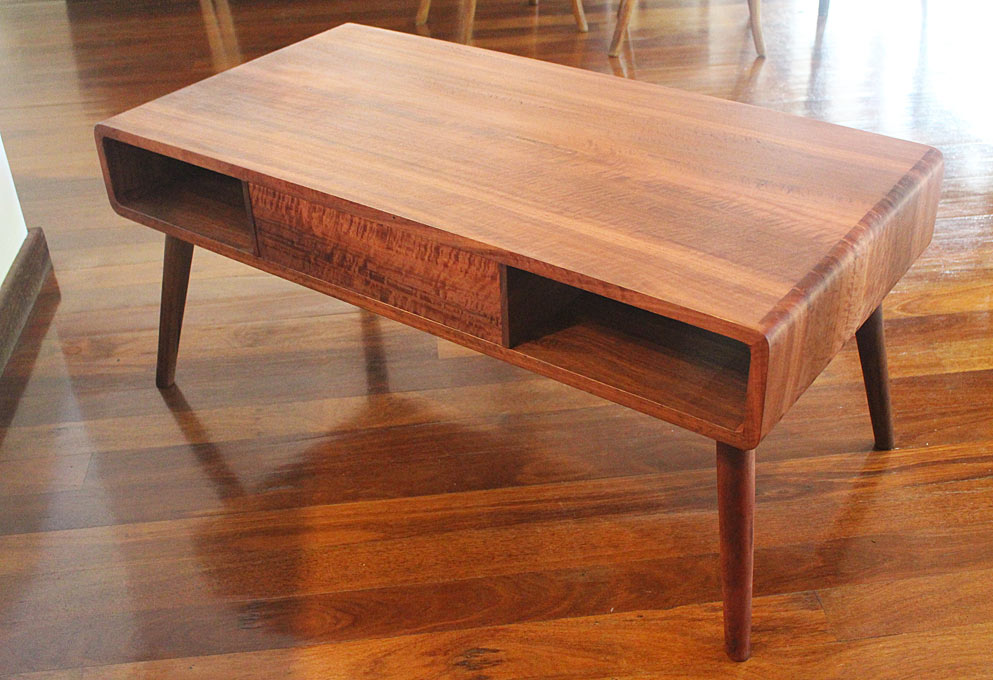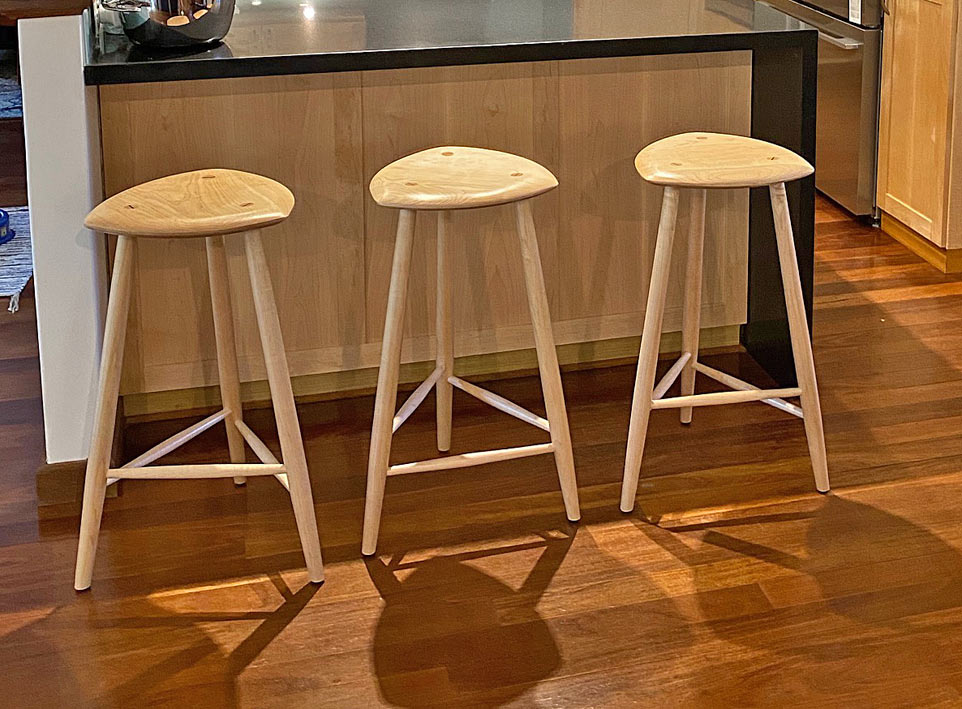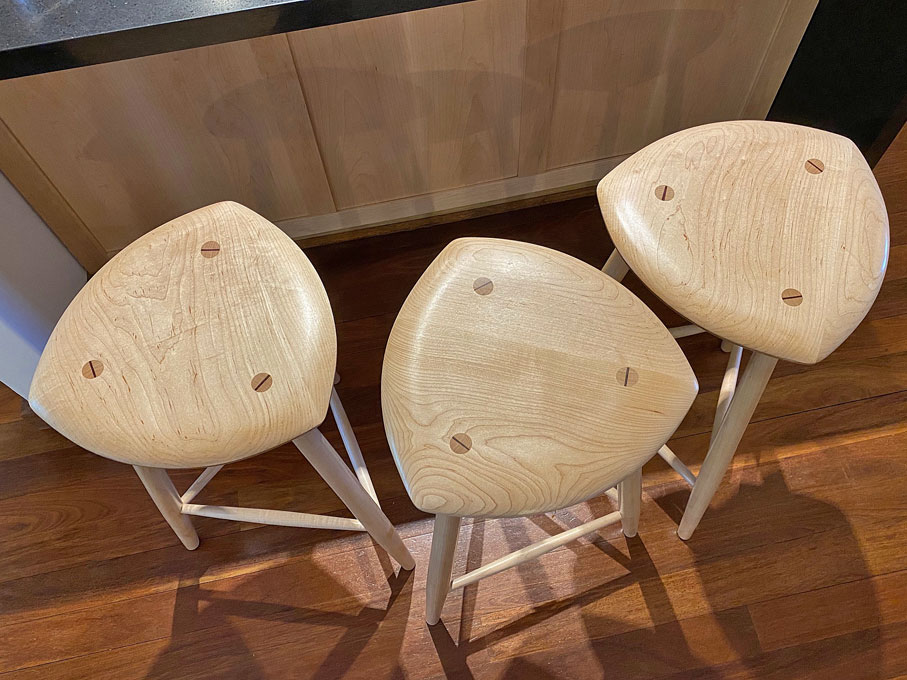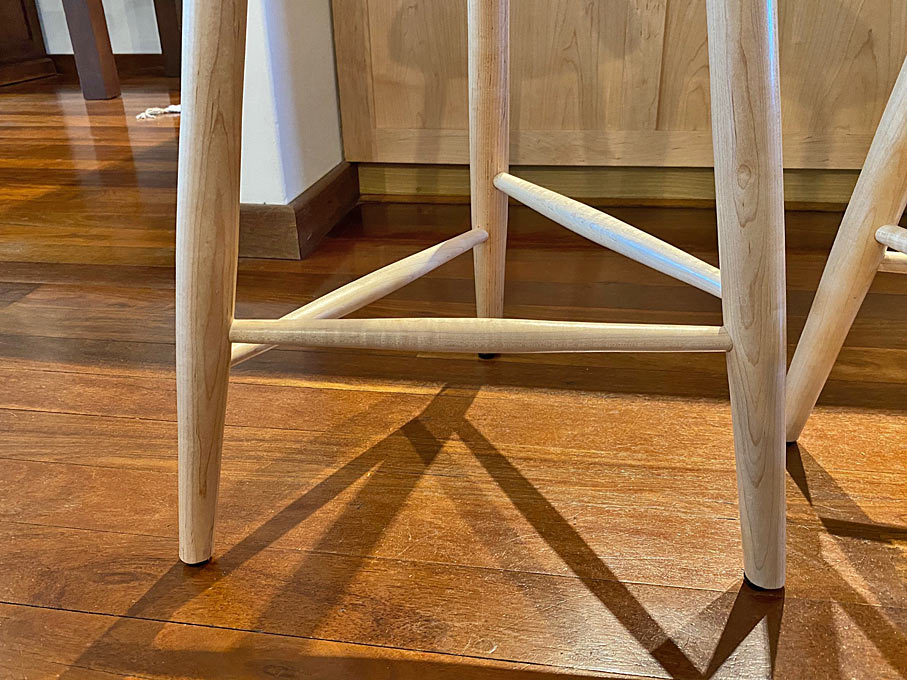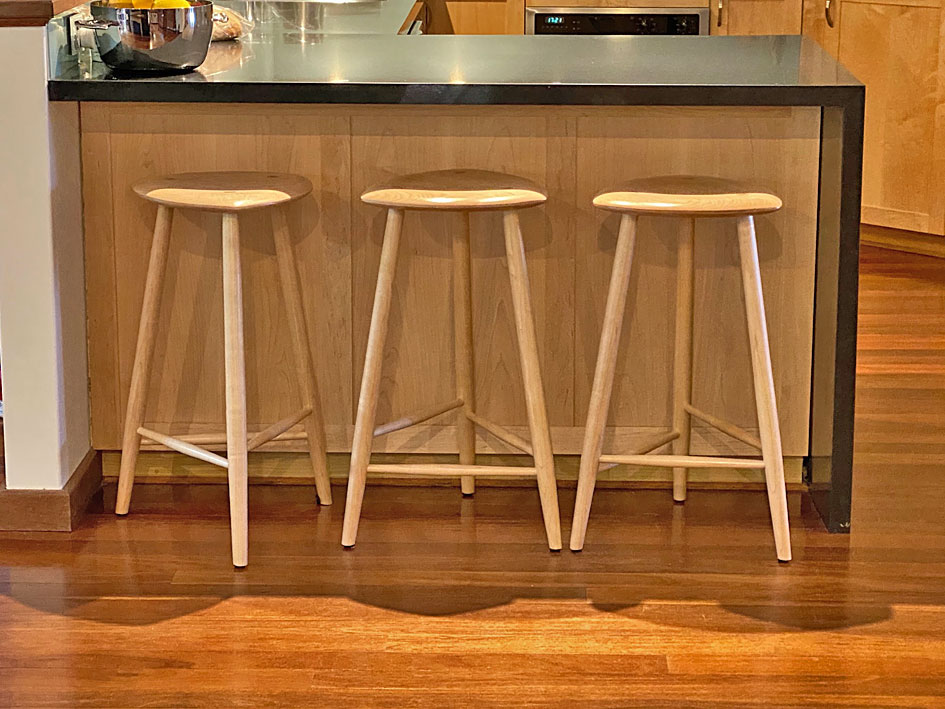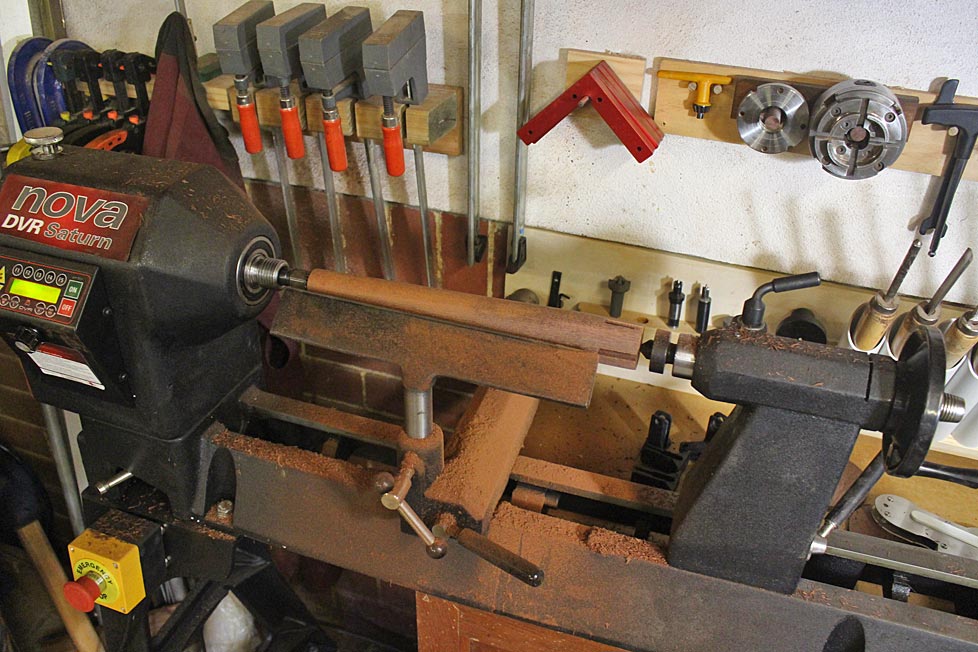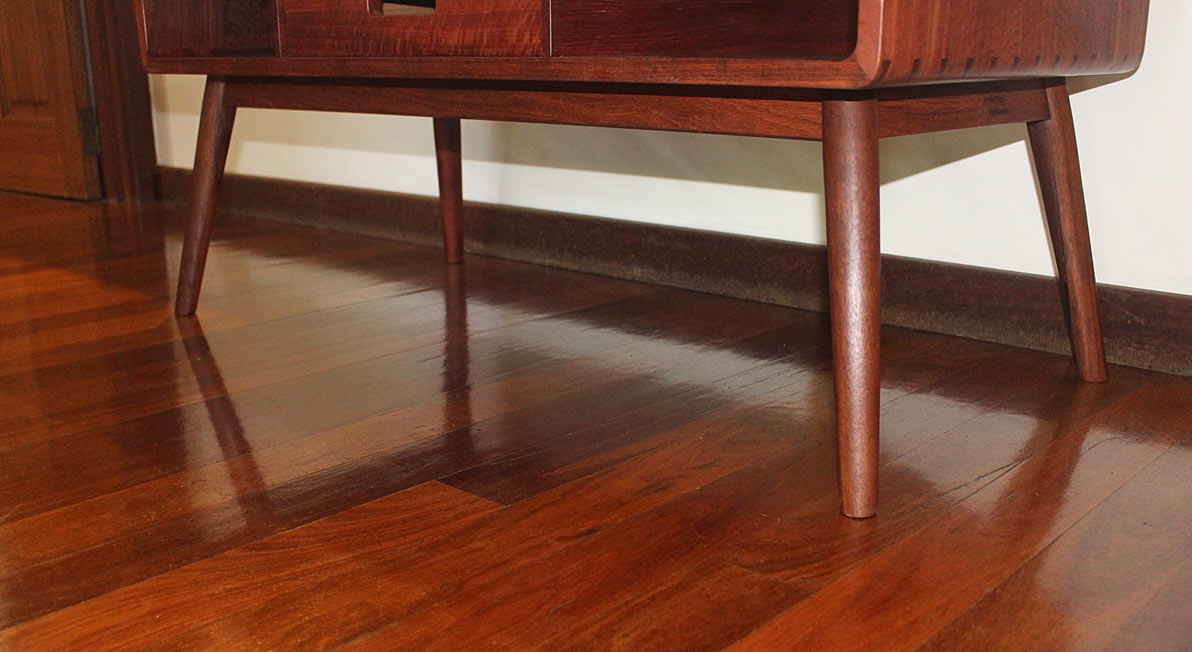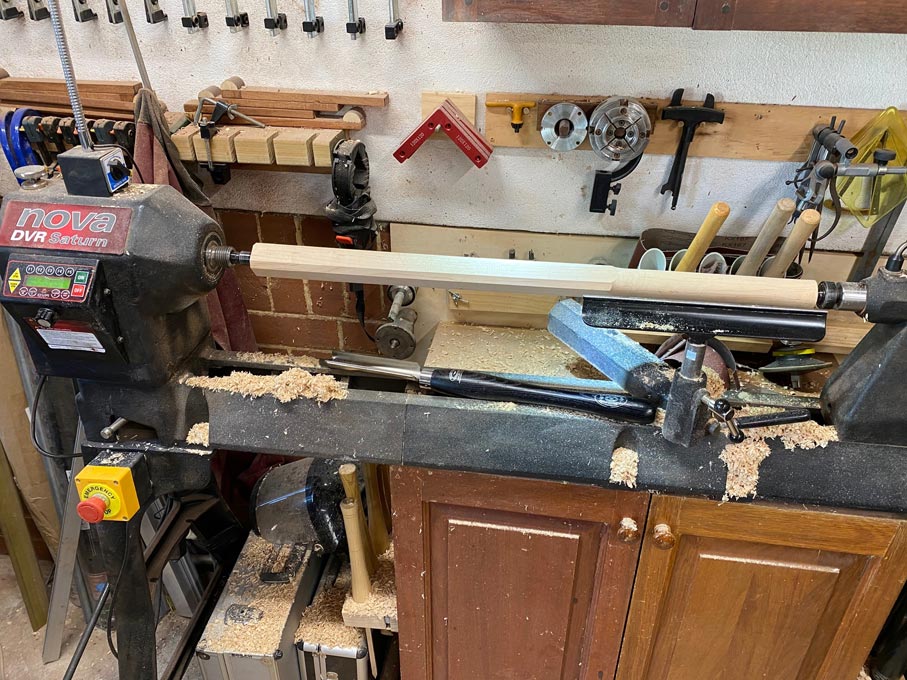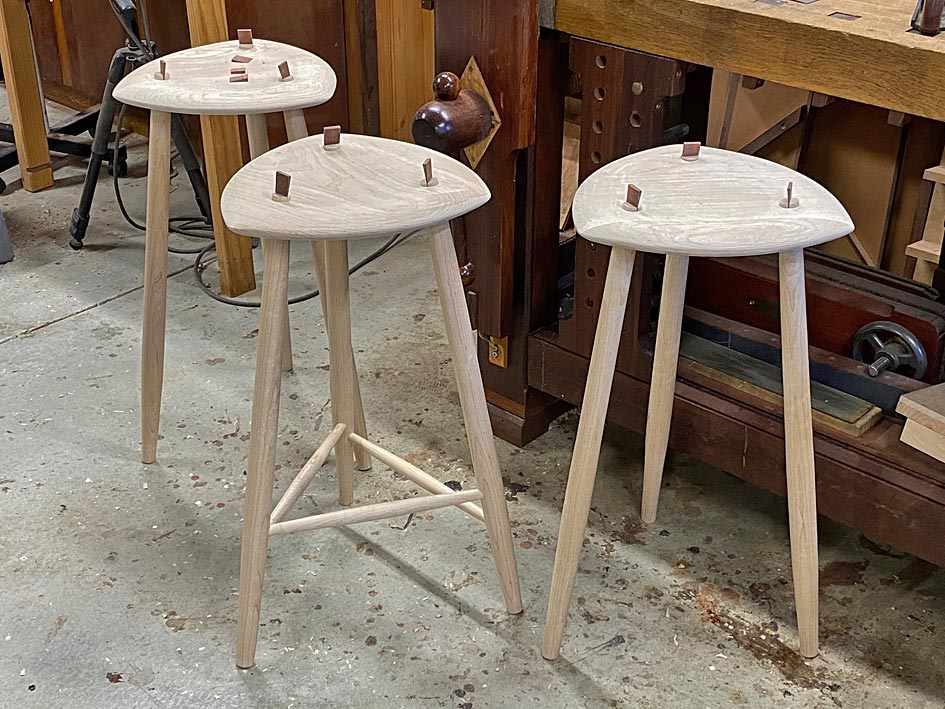A lot of interesting posts in this thread!
Derek Cohen,
What I am trying to point out is that design is a skill that can be practised. And I think it is quite obvious that you have learned some design skills along the way! I have done extremely little furniture design, and when it comes to furniture I am an amateur. What I have learned from architecture and my training that can be applied to woodworking is to discuss design think about design, and most of all, not to be afraid of the subject. I think in a way that just figuring out what you like and why you like it is the most important part.
Your chest of drawers and the "remade" table are my favourites among the work you show. The chest of drawers has good proportions, tasteful use of wood and display of joinery. There is a show of skill without showing of. And your fathers chairs from the 1930's are good example of modernism at it's best. They have very nice lines.
Also, some of the simplest designs, such as the casework of Krenov, is misinterpreted by many aspiring makers as they do not understand or recognise the proportions. Proportion will make or break a design. Is this taught (with rules, such as the Golden one), or is it innate?
The issue of proportions is both, I think, innate and something to learn and practise. There are a lot of different rules and there are different proportional systems used in different culture (even though there is a lot of overlap). Rules can be a teaching guide, and tool in a toolbox, but if you work a lot with design I think a lot of this just becomes a part of the process. Sometimes different rules of proportions can be used to "straighten up" a rough sketch that looks slightly off. On the other hand I think the most important rule is "If it looks alright, it is alright."
I have never studied art/design, so I don't know about any of the historical art/design movements and famous artists/designers.
Of current work I have found online, I love a lot of the work of Caleb Woodard. For example this one
I like the pieces by Malmsten but the thought of sitting on a sofa with no cushions on the back doesn't feel that appealing. I really like the scandi designs of the 1900s, can anyone recommend a web site or book which shows and lists designers and their furniture from this era?
It ususally has cushions! I just wanted to show of the beautiful back. I'll get back to you If I figure out any good books on the subject.
I may be chief complainer number one about design discussions, but I think a lot of what burdens us starts with the small things.
if we're not professionally trained, design things are incremental, and it's not always trivial "oh, I know this now, so I'm good".
what's not done, it seems, is "OK, I made this - how could it look better" and a request of "please, no talk about sanding or using a different method for dovetails".
I would be chief offender number one if this kind of discussion was had going all the way down to things like moulding profiles - "anyone have any idea on how to make this moulding profile nicer for the piece?".
I agree that the Pitts furniture was a little busy - it's sort of the style for that type, though. Fancy, and not function with integrated design 50/50.
I needle over little things, like handles, and transitions of curves, and things, but learned probably 6-8 years ago that when I carefully made something, that is where it was like "OK, looks neatly made, but something doesn't look right about it".
Warren Mickley in the US, a talented carver, but also jack of all trades for any hand work when there is paying work that he can beat a larger shop on mentioned that apprentices would've been taught design in a cabinetmaking shop at the same time they were learning the physical skills of making so that both would more or less mature at the same time (at least that's what I got).
it never really catches on online. I think something people don't like is "I just made this piece and I'm OK with putting it up for praise, but I don't want any criticism" and objective looks at "how could it look a little better, which will help carry over to a lot of things that aren't just this piece" never occur.
You make a lot of tools, and then the aesthetics are of a slightly different kind. It is even more tightly connected to function. And since many of the forms are so perfected for tools it is more a matter of working within a tradition. And then figuring out the little things like handles is a big thing. Also when it comes to tools I am reminded by a quote by the Swedish engineer Birger Ljungström who in 1913 was one of the founders of STAL, a manufacturer of turbines that later was bought by ASEA (now ABB). On the drafting tables of the engineers he put notes saying: "Is your construction unnecessarily ugly?"
I think that what Warren Mickley said could be applied to most hobbiysts as well. Sadly there are very few writers and "personalities" that talk about design and encourage woodworkers to learn that at the same time as they learn the other skills. And as Jacob says in this thread, copying and working with traditional forms and types of furniture is a great way to learn.
I know that you are not fond of Christopher Schwarz, but he is one of the few "personalities" that in my mind have a good eye for design (especially when it comes to chairs) and actually tries to teach about it.
Most of us are hobby makers. I think the two go together - to be able to execute something so that it doesn't influence design negatively, and to be able to design something well so that we don't allow execution to dominate things.
its kind of like music - sometimes a song doesn't need the musicians to dump everything they can do on their instruments in the middle of it. Sometimes that's the focus.
Yes! I love both the Ramones and Prince. I think that the analogy is spot on when it comes to making things as well. It also is a good analogy to the idea that discussions about design boils down to "I like/you like". All work can be discussed from it's context, within it's genre so to speak. To speak in heavy metal terms, I hate Sabaton but love Black Sabbath. We can in furniture look at both contemporary as well as historicist work and look at them in their separate merits. River tables however I cannot tolerate as a genre...
I suppose more of an interesting design rather than super skilled,
but it does have some nice bits, but also some quite odd parts.
Some videos of various chairs , aswell as some modern takes of it, if you youtube national museum of Ireland.
View attachment 149506
Vernacular furniture is fantastic and inspiring, and it is what I would like to have more time making.
Well if you look at Jorny's first and last photo they both show very simple elegant designs with absolutely minimal joinery skill involved. And Ttree's Sligo chair.
Conversely there's some horrible stuff made with very competent joinery. Good joinery doesn't guarantee good design.
In some traditions the mere appearance of simplicity requires quite sophisticated joinery to put together - Japanese, arts n crafts, etc which is a bit of a contradiction.
Yes!










